- Y.SH
- Persian Tasty
- 19112 views
- 10 comments
How can you tell real saffron from fake? Is there anything wrong with buying saffron? Telling fake saffron vs. real is easier than what you expect. So, if you want to find out how to identify real saffron, stay with this simple article.
The item labeled saffron can be entirely fake or real saffron but adulterated with other substances. Fake saffron can be corn silk threads, safflower (an unrelated thistle), coconut filaments, dyed horsehair, or shredded paper.
Table Of Content
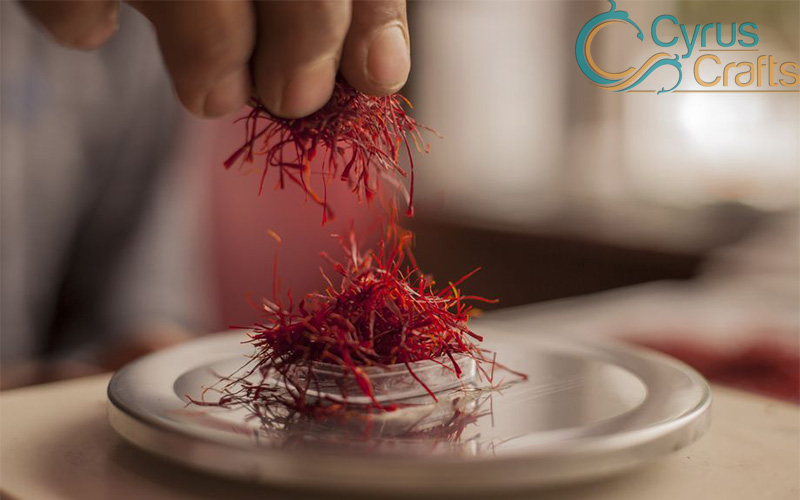
What Is Real Saffron?
Saffron (Safran, Azafra'n), sometimes called RED GOLD, originated during the Bronze Age in ancient texts dating from the 7th century BC and spans many cultures, continents, and civilizations. Saffron, a spice derived from the dried stigmas of the saffron crocus flower (Crocus Sativus), has remained among the world's most costly spices throughout history. However, as an object of desire, it can also be a victim of fraud. Low-quality saffron is often traded on international markets, and the specifications for pure saffron are not always respected. With the help of saffron, you can give your food and Desserts like bamieh (Persian Tulumba with saffron) a unique flavor.
As a result of its high price, saffron is typically tampered with to increase its value.
Cyrus Crafts; Luxury & Unique Products
Six Tips to Tell Fake Saffron vs. Real
In saffron, three factors are significant: Crocin (color), Picrocrocin (flavor), and Safranal (aroma). A higher amount of these compounds in saffron provide a higher quality of saffron. Grading of saffron is done through gauging Picrocrocin (flavor), Crocin (color), and safranal (aroma) content. These three factors determine saffron quality in the laboratory by ISO professionals.
The yellow saffron, also called American saffron or Safflower (Carthamus tinctorius), looks like the real thing (Crocus sativus) but is much cheaper. The flavor is almost neutral, but it does have similar coloring abilities to the real thing.
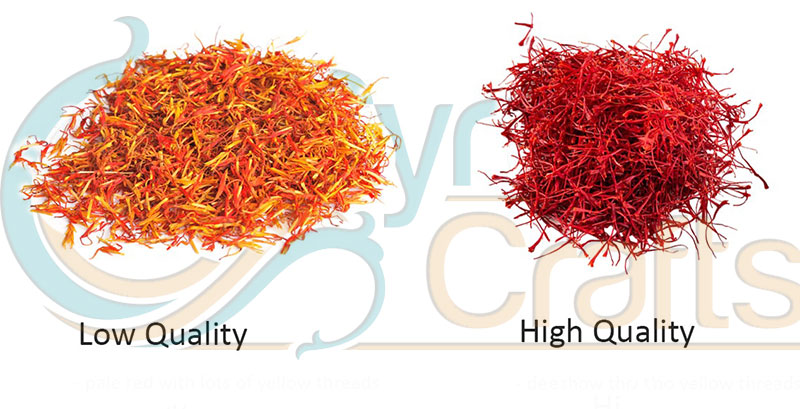
Other simple and proven methods can be used to test the quality of saffron without spending a lot of money on lab tests. We have categorized these tests into two groups – Sensory and Extrasensory.
We are using our sensory perceptions of Sight-Smell-Taste and extrasensory techniques of Cold Water Method, Float Test & Baking soda water test.
1. Identify Real Saffron by Sight
The price of saffron greatly varies by the cut of the Saffron stigma or thread/filament.
- Saffron Grade 1 or A+ or All Red (Sargol or Negin): All red Saffron containing only stigmas. This grade of saffron is 100%, Premium Saffron. This is also natively known as Super-Negin or Sargol Saffron. It is the top 1/3 or 2/3 part of the Saffron filament. It is highly priced due to its rich color & aroma. It is the purest and finest quality saffron.
- Saffron Grade 2 or Thread (Pushal): Saffron Grade 2 or Thread contains the red stigmas and the yellow/white style end. This category of saffron is also costly and mainly used for daily cooking.
- Saffron grade 3 or B or Tied bunch (Dasteh): Contains the red stigmas connected to the entire style. This is typically low cost and low quality and available in all major local grocery stores. The overall weight of the thread contains more floral matter (Style). Its typical use is in perfumes (attars), fragrances, and incense & aromatic flavors.
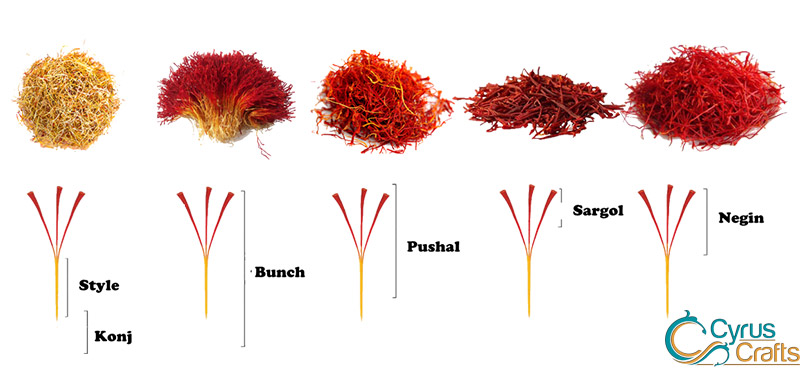
It's better to look at the shape of the filaments, which should be trumpet-shaped and vivid Crimson Red, with a lighter orange-red color on the tips. Saffron should smell fresh and not musky at all.
A strand of reddish saffron changes to golden color when mixed with hot milk.
2. Identifying of Real vs. Fake Saffron by Smell
The color of saffron is primarily attributed to the degraded carotenoids (Crocin and crocetin). In contrast, its flavor is attributed to the oxidation products (primarily safranal and Picrocrocin). The pure saffron aroma is exciting. If you know what honey and hay smell like, you will know what Real Saffron Aroma is. It is a blend of hay and honey smells.
3. Tell if Saffron is Real by its Taste
The bitter taste of saffron is due to the compound Crocus (i.e., Crocin). Saffron is bitter, and its flavor is quite distinctive. The taste is light, cutting, warm, and bitter, slowly dissipating from your palate. To determine if the saffron is genuine, all you need to do is ask the vendor for 3 or 4 threads of saffron, which you put on your tongue and suck on for a few seconds. You will experience a sharp, bitter taste in your taste buds. Then spit the threads onto a clean paper tissue and rub them inside. You know you buy genuine saffron if the paper tissue color appears yellow. If the color appears red, you are being sold colored threads. Of course, note that its bitter taste does not transfer to food. An example of a dish flavored with saffron is Zereshk Polo ba Morgh—rice and chicken cooked together with barberries (zereshk).
4. Tell Real Saffron with Color Diffusion Time
Put the threads in a small container of tepid water. Wait at least 15 minutes. Real saffron slowly turns the water yellow. The color change may take up to an hour. The saffron threads themselves retain their red color. If the water changes color immediately, turns red, does not change color, or the threads lose their color, the substance is not saffron. Also, after they soak, natural saffron threads will remain intact if you rub them between your fingers. Fakes, on the other hand, tend to fall apart.
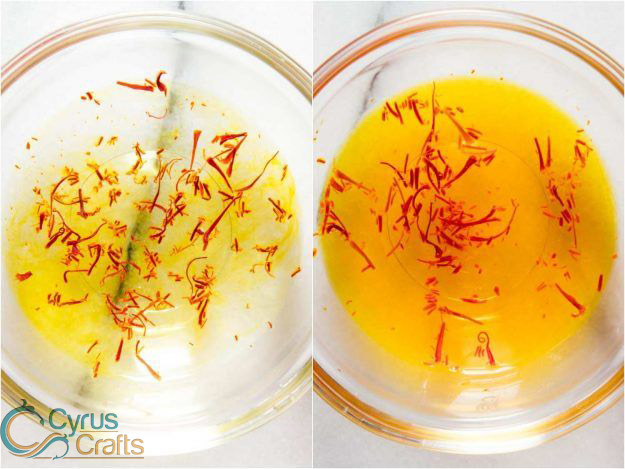
5. Floating Test to Identify Real Saffron vs. Fake
Another test of real saffron is the Float Test. Real saffron threads do not drown when put in water. They would instead float. Fake saffron threads would partially or wholly submerge in water because of the heaviness of the colored dye or the floral waste on them.
6. Identify Real Saffron with Baking Soda Test
Add a bit of baking soda to the water and mix it. Then add saffron to the mixture. The water/baking soda mix shall turn yellow if it's Pure saffron, and the fake one will turn dim red.
Real Saffron vs. Fake with CyrusCrafts' Quick Tips
Identifying real saffron vs. fake saffron is as easy as pie. According to the CyrusCrafts' quick tips that you reviewed in this article, you now know what is fake saffron and how to tell if saffron is real. It is essential to buy quality/real saffron if you want to enjoy the goodness of this spice.
When buying saffron, you may purchase low-quality saffron or be unaware of the difference between real and fake saffron. You can identify high-quality saffron by using the tests mentioned in this article. But actually, you don't need the tips anymore because CyrusCrafts is here to offer you real saffron with the highest quality and at the best price directly from Iran to Canada, the USA, and everywhere else on the earth. To buy a pack of real saffron, only choose your desired weight and fill out its order form or text us on WhatsApp by clicking the icon.








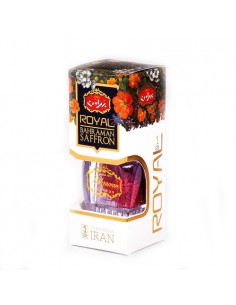

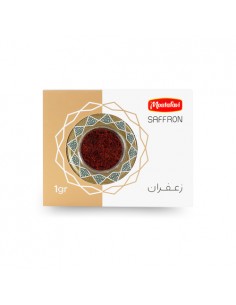

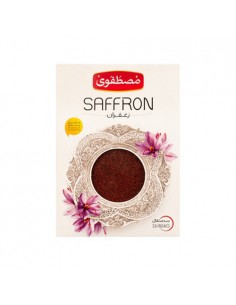

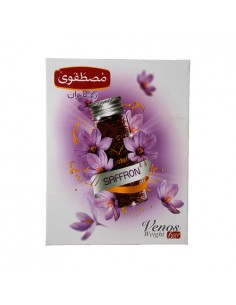

Comments (10)